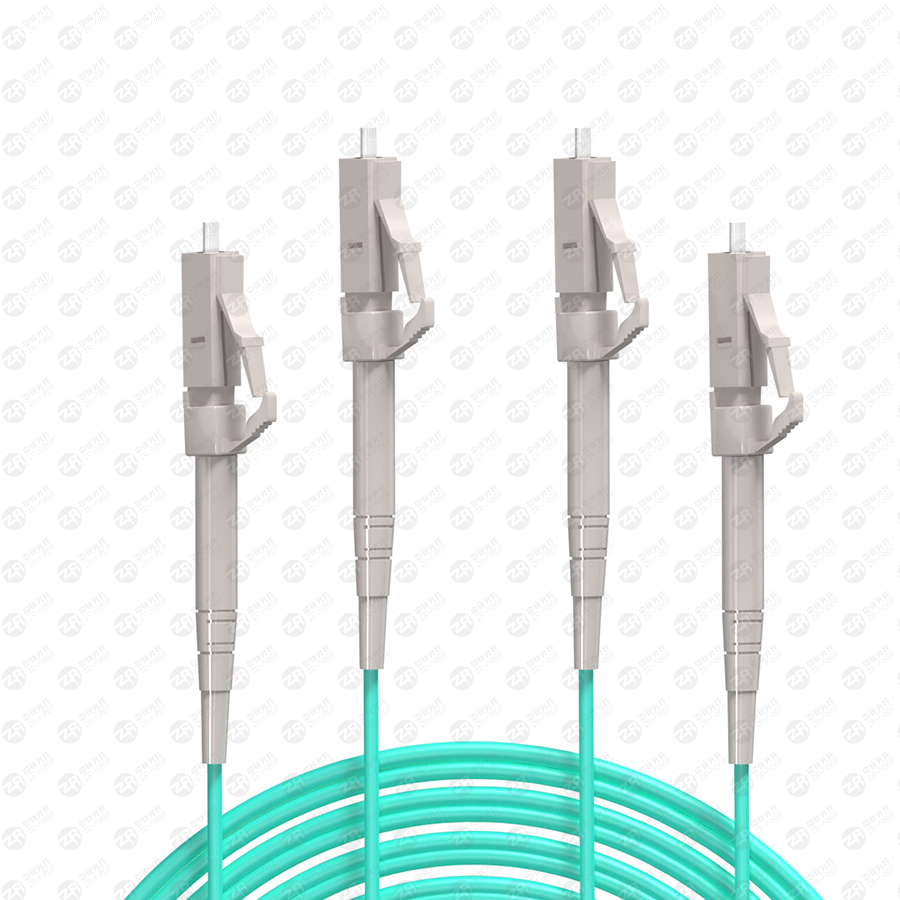Optical fiber, short for optical fiber, is a fiber made of glass or plastic that acts as a light-transmitting tool. The transmission principle is total reflection of light.
The optical fiber communication system is a communication system that uses light as the carrier wave, uses extremely high purity glass to draw a very thin optical fiber as the transmission medium, and transmits information with light through photoelectric conversion. Communication using optical fibers is called optical fiber communication.
Fiber optic transmission has many outstanding advantages:
1. Bandwidth: The width of the frequency band represents the size of the transmission capacity. The higher the frequency of the carrier, the larger the frequency bandwidth that can transmit the signal;
2. Low loss: When transmitting light of 1.31um, the loss per kilometer is below 0.35dB. If the light of 1.55um is transmitted, the loss per kilometer is smaller, which can reach below 0.2dB;
3. Light weight: The optical fiber is glass fiber with a small specific gravity, which makes it have the characteristics of small diameter and light weight, and the installation is very convenient;
4. Strong anti-interference ability: because the basic component of optical fiber is quartz, it only transmits light, does not conduct electricity, and is not affected by electromagnetic fields. The optical signal transmitted in it is not affected by electromagnetic fields. strong resistance;

5. High fidelity: Because optical fiber transmission generally does not require repeater amplification, it will not introduce new nonlinear distortion due to amplification. As long as the linearity of the laser is good, the TV signal can be transmitted with high fidelity;
6. Reliable working performance: The fiber optic system contains a small number of equipment (unlike the cable system that requires dozens of amplifiers), the reliability is naturally high, and the service life of the fiber optic equipment is very long, with a trouble-free working time of 500,000 ~750,000 hours;
7. Costs continue to decrease: As the source of materials (quartz) for making optical fibers is very rich, with the advancement of technology, the cost will be further reduced.
As a mainstream method of broadband access, optical fiber has the advantages of large communication capacity, long relay distance, good security performance, strong adaptability, small size and light weight, wide source of raw materials and low price. Applications are becoming more and more widespread.
Common fiber specifications are:
Single mode: 8/125μm, 9/125μm, 10/125μm
Multimode: 50/125μm, (European standard)
62.5/125μm, (US Standard)
Optical fibers currently used in optical fiber communication systems include silica optical fibers, plastic-clad optical fibers, single-mode optical fibers, and multi-mode optical fibers.
By raw material by mode
Quartz Material Plastic Clad Material Single Mode Fiber (SMF)
Multimode Fiber (MMF)
Features Low power consumption, broadband Thick core, high numerical aperture (NA) Wider transmission frequency band Thicker central glass core
application
Cable television and communication systems Local area network (LAN) and short-range communication Cable television and optical communication (broader) Multi-distance transmission of cable television and communication systems
Silica fiber is a fiber that uses silicon dioxide (SiO2) as the main raw material and controls the refractive index distribution of the core and cladding according to different doping amounts. Quartz (glass) series of optical fibers have the characteristics of low power consumption and broadband, and are now widely used in cable television and communication systems. The advantage of quartz glass optical fiber is low loss. When the light wavelength is 1.0-1.7μm (about 1.4μm), the loss is only 1dB/km, and the lowest at 1.55μm, only 0.2dB/km.
Plastic clad fiber (Plastic Clad Fiber) is a step-type fiber with high-purity silica glass as the core and plastic with a slightly lower refractive index than silica, such as silica gel, as the cladding. Compared with silica fiber, it has the characteristics of high core rent and high numerical aperture (NA). Therefore, it is easy to combine with the light-emitting diode LED light source, and the loss is also small. Therefore, it is very suitable for local area network (LAN) and short-range communication.
Single-mode fiber refers to a fiber that can only transmit one propagation mode in the working wavelength, usually referred to as single-mode fiber (SMF: Single Mode Fiber). At present, it is the most widely used optical fiber in cable television and optical communication.
The multimode fiber refers to the fiber in which the optical fiber has multiple modes according to the working wavelength and its possible propagation modes are called multimode fiber (MMF: Mlti ModeFiber). The core diameter is 50 μm, and since the transmission modes can reach several hundreds, the transmission bandwidth is mainly dominated by modal dispersion compared to SMF. Historically used for short-distance transmission in cable television and communication systems. The optical cable made of multi-mode optical fiber can be used for communication. It has good conduction performance and large transmission information capacity. One channel can accommodate dozens of people talking at the same time. Dozens of TV programs can be transmitted at the same time for free choice.
https://www.ductcable.com/product?productId=7c1c4bb1c5e940d594d8edd5188f10f7